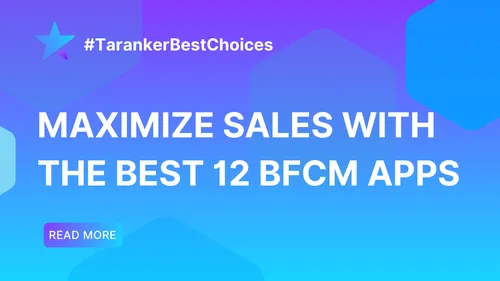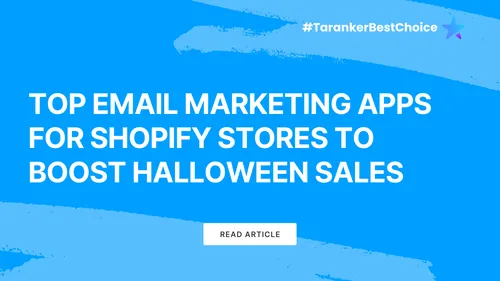In recent years, the landscape of global trade has been dramatically reshaped by emerging tariff regulations, especially impacting the dropshipping industry. As we move into 2025, dropshippers face new tariff challenges that threaten to compress profit margins further. This blog post explores these challenges and provides strategies to keep your margins healthy, maintaining a competitive edge in this evolving market.
With the ever-evolving trade policies and the fluctuating geopolitical climate, understanding how these tariffs impact product sourcing and pricing dynamics is critical for any dropshipper. The main questions that arise are how to adapt to these changes and what strategies will help sustain financial health.
Dropshipping, by its nature, relies heavily on cross-border trade, which makes it particularly susceptible to tariffs. Tariff surges can lead to increased costs, thereby squeezing the profit margins that entrepreneurs work hard to maintain. To navigate these choppy waters, it’s vital to stay informed about current and upcoming regulations. Subscribe to updates from World Trade Organization and other reputable sources to keep your information current.
This article will delve into actionable strategies to counteract these pressures, such as diversifying suppliers, optimizing supply chains, and leveraging technology for efficient tariff management. Prepare to equip yourself with practical tools and insights that ensure your dropshipping business not only survives but thrives amidst these new challenges.
Understanding the 2025 Tariff Landscape
The year 2025 brings a dynamic shift in the global trade environment as new tariff regulations take center stage. The tariff landscape is becoming increasingly complex with key changes affecting various aspects of international commerce. Notably, several emerging economies are entering tariff negotiations, modifying existing international trade dynamics. This shift sees countries like India and Brazil playing more prominent roles, influencing tariff decisions globally. Additionally, evolving trade alliances, such as the strengthening of the Trans-Pacific Partnership (TPP), are impacting global supply chains.

Understanding these changes is crucial for dropshipping businesses aiming to maintain healthy margins. Tariff adjustments can influence the cost of goods, affecting pricing strategies. Staying updated with resources like the World Trade Organization and reports from Reuters provides practical insights and expert perspectives to navigate these challenges effectively.
Identifying Potential Cost Increases in Dropshipping

In 2025, the landscape of dropshipping faces new challenges with evolving tariffs that could lead to cost increases across product sourcing and supply chains. Understanding these changes is crucial for businesses aiming to maintain profitability. Key areas where costs might rise include:
- Product Prices: Tariffs may increase the cost of goods from suppliers, directly impacting wholesale prices. This necessitates reviewing supplier agreements for flexible terms or alternative options. (World Trade Organization)
- Shipping Costs: Rising tariffs could elevate international shipping rates due to increased import taxes and duties. Exploring domestic suppliers or regional fulfillment centers can mitigate these effects. (Global Trade Magazine)
- Supply Chain Disruptions: Tariffs can lead to delays and higher costs, affecting the timely delivery of goods. Implementing an efficient inventory management system could help offset potential disruptions. (Supply Chain Dive)
Adaptation is key; understanding these potential costs will help in strategizing effectively, ensuring a healthy margin despite economic challenges.
Strategies to Negotiate Better Supplier Terms
- Establish long-term contracts with suppliers. These agreements can provide stability in pricing despite fluctuating tariffs, ensuring a steady profit margin. According to Trade.gov, long-term supplier relationships are critical for operational stability.
- Negotiate volume discounts. By committing to larger orders, you can often secure better rates, which can offset the impact of higher tariffs. Industry experts, as noted by Reuters, suggest that leveraging purchase volume is a key strategy.
- Explore diversified sourcing. Reducing dependency on a limited number of suppliers can mitigate risks associated with tariff changes. The IDC supports this, pointing to the benefits of a diversified supply chain.
Leveraging Technology for Efficiency
In the evolving landscape of dropshipping, leveraging technology is becoming increasingly vital for maintaining efficiency and profitability. Automation and artificial intelligence (AI) play key roles in optimizing logistics and slashing operational costs. For instance, AI-driven inventory management systems can predict sales trends and adjust stock levels, reducing overstock and understock issues. Integrating solutions like Shopify's built-in AI tools has proven to streamline the order fulfillment process, enhancing accuracy and delivery speed.
- Automated chatbots offer 24/7 customer support, improving customer satisfaction without increasing labor costs.
- Advanced analytics tools guide decision-making by providing actionable insights into market trends.
By investing in these technologies, businesses can better navigate the complexities of 2025's tariff regulations and sustain healthy margins.
Exploring New Markets and Diversifying Products
- Market diversification can play a crucial role in mitigating the effects of new tariffs in 2025. By expanding into emerging markets, businesses can reduce dependence on any single economic zone and spread the risks associated with trade policies.
- Offering a diverse range of products ensures that businesses are not heavily impacted by cost increases in any single category. This approach allows companies to maintain healthy profit margins and better weather economic fluctuations.
- Consider the case of Company X, which successfully entered the Southeast Asian market. By tapping into local preferences and utilizing regional suppliers, they minimized tariff costs and gained significant market share.
- Another example is Company Y, which pivoted to eco-friendly products in response to rising demand, thereby accessing niche markets and reducing tariff-related vulnerabilities.
Monitoring Regulatory Changes and Adapting Quickly
In the ever-evolving landscape of global trade, staying abreast of new tariff regulations is crucial for drop shippers aiming to maintain healthy profit margins. Adapting swiftly to these changes can make the difference between growing your business and facing steep operational challenges. To improve competitiveness, consider the following strategies to navigate regulatory changes effectively:
- Stay Informed: Regularly review updates from reliable sources like the World Trade Organization and Center on Budget and Policy Priorities.
- Leverage Technology: Use trade management software that offers real-time tracking of tariff changes and compliance requirements.
- Network with Industry Peers: Engage with forums or professional groups where experiences and insights about navigating regulatory shifts are shared.
Adapting your business model promptly to incorporate such strategies not only cushions the impact of new tariffs but also leverages opportunities for strategic advantage.
In the face of evolving tariffs and regulatory landscapes, dropshippers must stay agile and informed. By implementing the discussed strategies, businesses can not only safeguard their profit margins but also thrive despite the challenges. Emphasizing diversification, leveraging technology, and fostering strong supplier relationships are essential to navigating 2025’s dropshipping environment successfully.
Firstly, diversifying suppliers and product offerings can help mitigate risks associated with new tariffs. This approach not only spreads potential cost increases but also enhances market adaptability. Secondly, technology plays a pivotal role in maintaining efficient operations; utilizing advanced analytics can optimize inventory management and improve decision-making processes. According to a report by McKinsey, companies investing in technological innovation are better positioned to respond to supply chain disruptions.
Finally, nurturing strong relationships with reliable suppliers is crucial. Building long-term partnerships can lead to favorable negotiation outcomes and better terms, ultimately protecting profit margins. The U.S. International Trade Commission (USITC) emphasizes the importance of strategic sourcing for maintaining competitive advantage in international trade.
In conclusion, by adapting to the changing landscape with informed strategies, nimble operations, and strong partnerships, dropshippers can mitigate the impact of new tariffs in 2025. Stay proactive, embrace change, and leverage industry insights to ensure your dropshipping business not only survives but thrives in the years ahead. Join our upcoming webinar series on innovative dropshipping solutions to stay ahead of these challenges.













